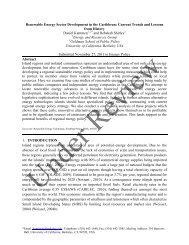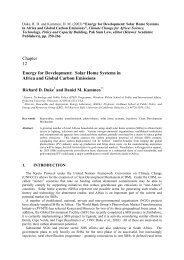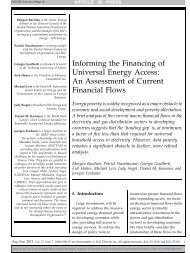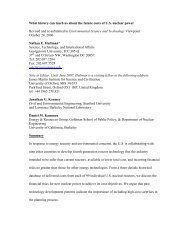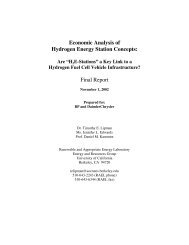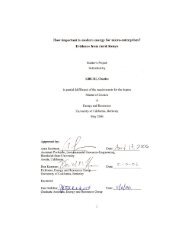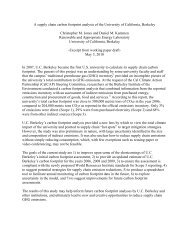Testing Small Wind Turbine Generators - Renewable and ...
Testing Small Wind Turbine Generators - Renewable and ...
Testing Small Wind Turbine Generators - Renewable and ...
- No tags were found...
Create successful ePaper yourself
Turn your PDF publications into a flip-book with our unique Google optimized e-Paper software.
is used, frictional losses between the two machines are entirely eliminated. The verticalconfiguration, however, has even more important advantages. For one, it requires a muchsimpler mounting structure, since the 75-lb motors rest directly on the platform rather thanbeing cantilevered out towards each other. Similarly, the vertical configuration simplifiesassembly: while mounting or dismounting an electrical machine, it is not necessary to fightgravity while getting the machine into position. While the introduction of a chain driveis an additional system <strong>and</strong> expense, it confers two more advantages. First, it simplifiesalignment. Since the shafts are not connected directly, they need not be perfectly aligned.Second, it introduces an opportunity for easy <strong>and</strong> effective position sensing.While thechain drive keeps the motor <strong>and</strong> generator turning in unison, it can also turn a sprocketmountedoptical encoder. In the horizontal configuration, an additional drivetrain would berequired to link the shafts to the optical encoder–thus making it no simpler than the verticalconfiguration. For these reasons, the vertical configuration is selected for the dynamometer.2.2.3 Additional Design ConsiderationsTo ensure proper tensioning of the roller chain, <strong>and</strong> to allow easy disassembly of thesystem, the generator mount is designed to rest on rolling trolleys that move within the mainhorizontal channels. Thus during disassembly, the generator’s mount can be untightened<strong>and</strong> rolled towards the motor to create slack in the drive chain. For reassembly, the generatoris pulled away from motor to lightly preload the chain while the mount is tighened securelydown for testing. The rolling trolleys must withst<strong>and</strong> the compressive force of the generator,as well as an additional compressive force introduced when the generator mount is tighteneddown.Distributed among four trolleys, the total force on generator mount can safelyreach 400 lbs, or over five times the weight of the generator alone. Figure 2.4 shows oneroller assembly, consisting of two roller trolleys supporting a Unistrut beam. The completegenerator mount consists of two such assemblies: the generator rests on two parallel Unistrutbeams, each of which is supported by a roller trolley on each end. This complete setup isvisible in Figure 2.5 Unlike the generator mount, the motor mount is connected rigidly tothe rest of the mounting structure without rollers.10




